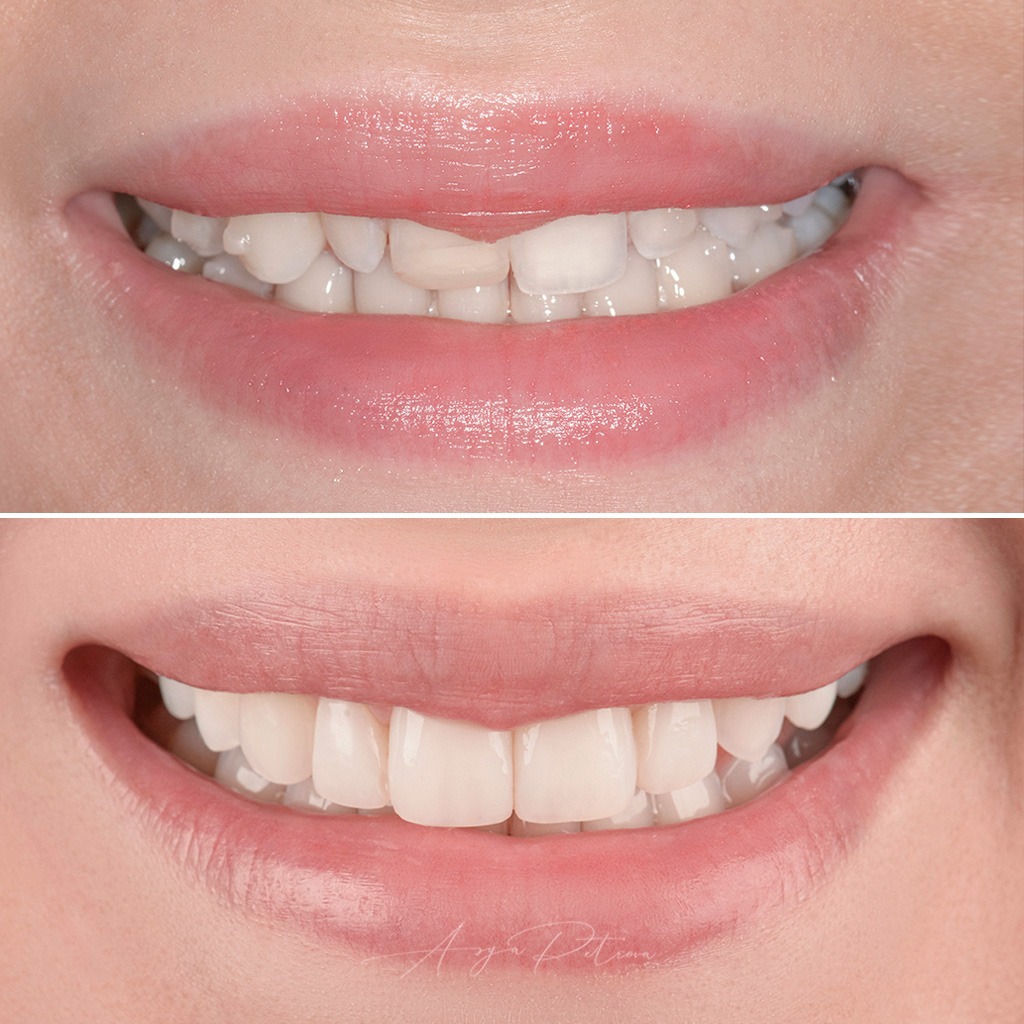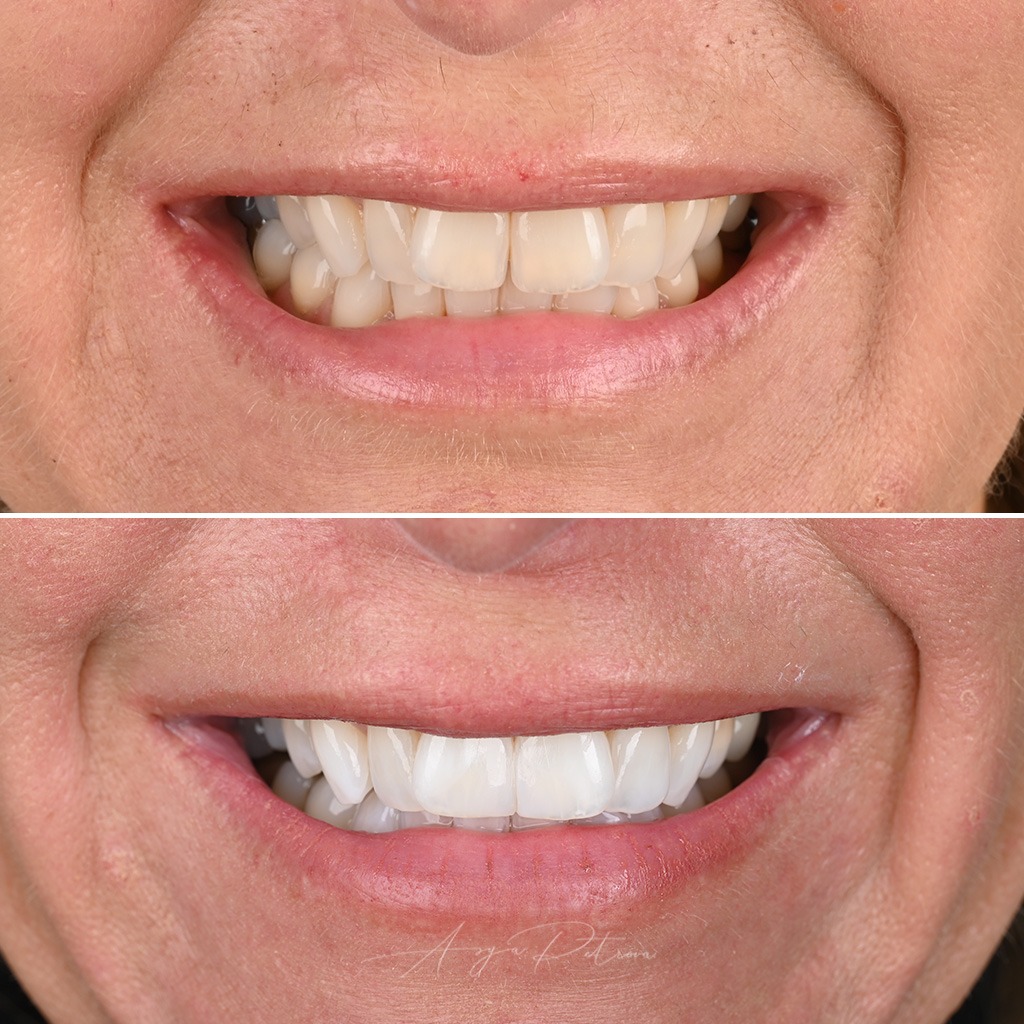
Composite Bonding
What is composite bonding?
Composite bonding is a dental procedure that involves applying a tooth-colored resin material to a tooth in order to improve its appearance and function. The resin is shaped to match the surrounding teeth. The resin is then cured, or hardened, using a special light.
It is commonly used to repair chips, cracks, and gaps in the teeth, as well as to change the shape or color of a tooth. It can also be used to protect exposed roots, or to build up worn or misshapen teeth. The procedure is typically quick, non-invasive, and can be performed in a single visit to the dentist.
Composite bonding is a cost-effective alternative to other cosmetic dental procedures, such as veneers or crowns, and can provide long-lasting results with proper care and maintenance.
However, it may not be as durable as other procedures and may need to be replaced or repaired after several years. The dentist will be able to advise the patient on the best course of treatment depending on the individual needs and goals.
What is composite bonding?
Composite bonding is a dental procedure that involves applying a tooth-colored resin material to a tooth in order to improve its appearance and function. The resin is shaped to match the surrounding teeth. The resin is then cured, or hardened, using a special light.
It is commonly used to repair chips, cracks, and gaps in the teeth, as well as to change the shape or color of a tooth. It can also be used to protect exposed roots, or to build up worn or misshapen teeth. The procedure is typically quick, non-invasive, and can be performed in a single visit to the dentist.
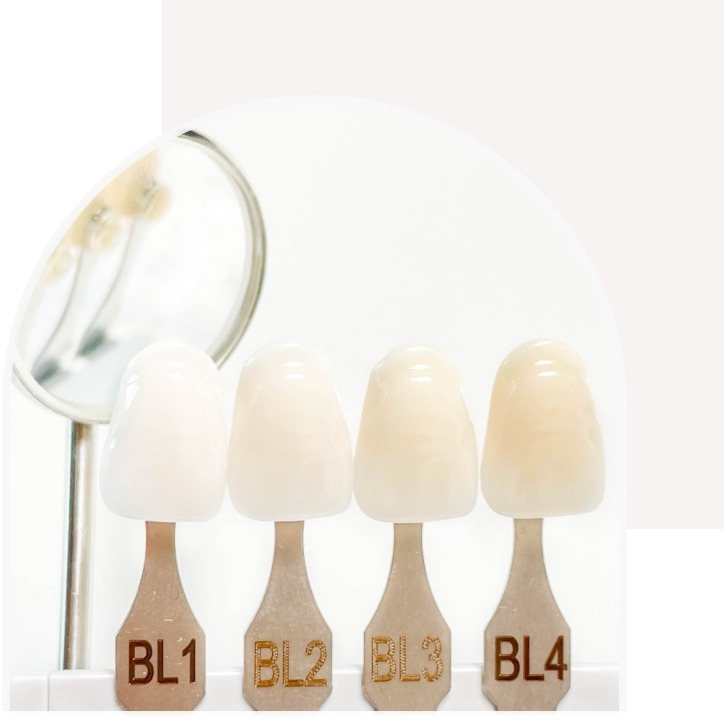
Composite bonding is a cost-effective alternative to other cosmetic dental procedures, such as veneers or crowns, and can provide long-lasting results with proper care and maintenance.
However, it may not be as durable as other procedures and may need to be replaced or repaired after several years. The dentist will be able to advise the patient on the best course of treatment depending on the individual needs and goals.
Maintenance of composite bonding
To ensure the longevity of the composite bonding and maintain its natural appearance, it’s important to take proper care of the bonded area. The following steps can help:
• Brushing and Flossing Regularly: Brushing twice a day and flossing daily can help remove plaque and prevent decay around the bonded area.
• Avoiding Hard and Crunchy Foods: Chewing on hard or crunchy foods can put stress on the bond and increase the risk of damage. It’s important to avoid these foods or limit the consumption of them.
• Avoiding Teeth Grinding: Teeth grinding or clenching can put a lot of pressure on the bond, potentially causing it to crack or wear down. If the patient grinds their teeth, the dentist may recommend a nightguard to protect the bonded teeth while they sleep.
• Maintaining Good Oral Hygiene: Regular dental check-ups and cleanings can help maintain the health of the bonded teeth and ensure that the bond remains intact.
• Protecting the Bonded Teeth: If they participate in sports or other activities that put their mouth at risk of injury, it’s important to protect their bonded teeth with a mouthguard.
By following these steps and taking good care of the bonded teeth, patients can ensure that the composite bonding lasts for several years and remains natural-looking.
Maintenance of composite bonding
To ensure the longevity of the composite bonding and maintain its natural appearance, it’s important to take proper care of the bonded area. The following steps can help:
• Brushing and Flossing Regularly: Brushing twice a day and flossing daily can help remove plaque and prevent decay around the bonded area.
• Avoiding Hard and Crunchy Foods: Chewing on hard or crunchy foods can put stress on the bond and increase the risk of damage. It’s important to avoid these foods or limit the consumption of them.
• Avoiding Teeth Grinding: Teeth grinding or clenching can put a lot of pressure on the bond, potentially causing it to crack or wear down. If the patient grinds their teeth, the dentist may recommend a nightguard to protect the bonded teeth while they sleep.
• Maintaining Good Oral Hygiene: Regular dental check-ups and cleanings can help maintain the health of the bonded teeth and ensure that the bond remains intact.
• Protecting the Bonded Teeth: If they participate in sports or other activities that put their mouth at risk of injury, it’s important to protect their bonded teeth with a mouthguard.
By following these steps and taking good care of the bonded teeth, patients can ensure that the composite bonding lasts for several years and remains natural-looking.
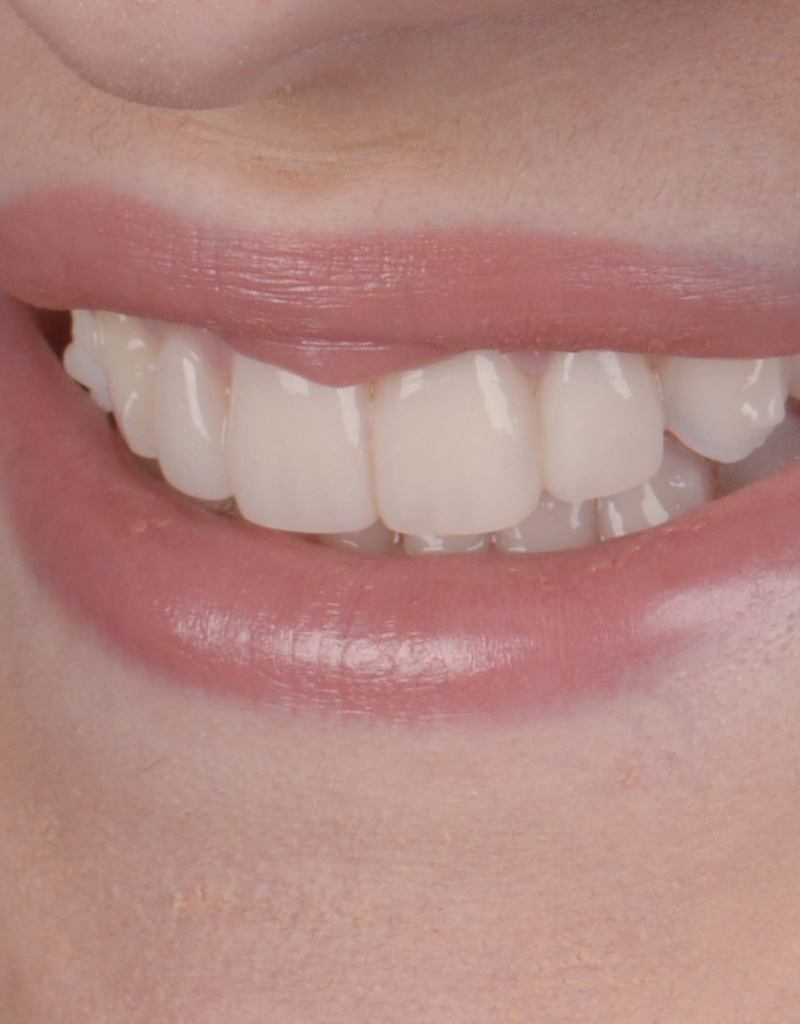
Step by step
The entire procedure typically takes about 30 minutes to a couple of hours, depending on the extent of the bonding required. After the procedure, the patient may experience some sensitivity, but this should subside within a few days. The dentist will provide the patient with aftercare instructions to help ensure the best possible outcome from the composite bonding procedure.
1.
Application of Material
A special bonding agent is applied to the prepared tooth. The composite material is then placed on the tooth and molded to the desired shape and contour.
The material is then cured, or hardened, using a special light.
2.
Shaping & Polishing
After the composite material has hardened, the dentist will shape and polish the bonded area to match the surrounding teeth.
This step is important to ensure that the bond looks natural and feels smooth.
3.
Final Inspection
The final step is to inspect the bonded area and make any necessary adjustments to ensure that the bond is strong, looks natural, and feels comfortable.
Step by step
The entire procedure typically takes about 30 minutes to a couple of hours, depending on the extent of the bonding required. After the procedure, the patient may experience some sensitivity, but this should subside within a few days. The dentist will provide the patient with aftercare instructions to help ensure the best possible outcome from the composite bonding procedure.
1.
Application of Material
A special bonding agent is applied to the prepared tooth. The composite material is then placed on the tooth and molded to the desired shape and contour.
The material is then cured, or hardened, using a special light.
2.
Shaping & Polishing
After the composite material has hardened, the dentist will shape and polish the bonded area to match the surrounding teeth.
This step is important to ensure that the bond looks natural and feels smooth.
3.
Final Inspection
The final step is to inspect the bonded area and make any necessary adjustments to ensure that the bond is strong, looks natural, and feels comfortable.
Expectations after the procedure
There are some important factors to keep in consideration of the after of the procedure:
• Sensitivity: It’s common to experience some sensitivity in the bonded area for a few days after the procedure. This should subside on its own and can be managed with over-the-counter pain relievers.
• Proper Care: Proper care of the bonded area is important to ensure the best possible outcome. This may include avoiding chewing on hard or crunchy foods, as well as practicing good oral hygiene, including brushing and flossing as normal.
• Follow-Up Appointments: The dentist may recommend a follow-up appointment to evaluate the bonded area and ensure that the bond is strong and functioning properly.
• Longevity: With proper care and maintenance, composite bonding can last several years. However, the bond may need to be repaired or replaced if it becomes damaged or wears down over time.
It’s important to follow the dentist’s aftercare instructions carefully to ensure the best possible outcome from the patient’s composite bonding procedure.
Expectations after the procedure
There are some important factors to keep in consideration of the after of the procedure:
• Sensitivity: It’s common to experience some sensitivity in the bonded area for a few days after the procedure. This should subside on its own and can be managed with over-the-counter pain relievers.
• Proper Care: Proper care of the bonded area is important to ensure the best possible outcome. This may include avoiding chewing on hard or crunchy foods, as well as practicing good oral hygiene, including brushing and flossing as normal.
• Follow-Up Appointments: The dentist may recommend a follow-up appointment to evaluate the bonded area and ensure that the bond is strong and functioning properly.
• Longevity: With proper care and maintenance, composite bonding can last several years. However, the bond may need to be repaired or replaced if it becomes damaged or wears down over time.
It’s important to follow the dentist’s aftercare instructions carefully to ensure the best possible outcome from the patient’s composite bonding procedure.

Benefits of composite bonding
Composite bonding offers several benefits to those who choose this procedure, including:
Improved Appearance
Composite bonding can be used to improve the appearance of teeth that are discolored, stained, chipped, cracked, or misshapen. The resin material can be matched to the color of the surrounding teeth, providing a natural-looking result.
Non-Invasive
Unlike other cosmetic dental procedures, composite bonding is minimally invasive and does not require the removal of any healthy tooth structure. This makes it a popular choice for those who are looking for a quick and straightforward solution to their dental concerns.
Cost-Effective
Composite bonding is typically less expensive than other cosmetic dental procedures, such as veneers or crowns, making it a cost-effective solution for those who are on a budget.
Durable
With proper care and maintenance, composite bonding can last several years, providing a long-lasting solution to dental concerns.
Quick & Convenient
The composite bonding procedure can be performed in a single visit to the dentist, making it a convenient option for those with busy schedules.
Versatile
Composite bonding can be used to address a variety of dental concerns, making it a versatile solution for many people.
What the patients want to know
Frequently Asked Questions
Composite bonding is usually not painful. However, some patients may experience some sensitivity or discomfort during or after the procedure, which can usually be managed with over-the-counter pain relievers.
Composite bonding can last several years with proper care and maintenance. However, the bond may need to be repaired or replaced if it becomes damaged or worn down over time.
Yes, composite bonding can be used to repair chips and cracks in teeth, as well as to improve the appearance of discolored, misshapen, or uneven teeth.
Yes, composite bonding can be used to replace silver (amalgam) fillings, which are a visible and less aesthetically pleasing option.
Composite bonding is a semi-permanent solution, as the bond may need to be repaired or replaced if it becomes damaged or worn down over time. However, with proper care and maintenance, the bond can last several years.
Composite bonding is a safe and effective solution for many people. However, the best way to determine if composite bonding is right for you is to schedule a consultation with a dentist who can evaluate your specific needs and recommend the best course of action.
Composite bonding is usually not painful. However, some patients may experience some sensitivity or discomfort during or after the procedure, which can usually be managed with over-the-counter pain relievers.
Composite bonding can last several years with proper care and maintenance. However, the bond may need to be repaired or replaced if it becomes damaged or worn down over time.
Yes, composite bonding can be used to repair chips and cracks in teeth, as well as to improve the appearance of discolored, misshapen, or uneven teeth.
Yes, composite bonding can be used to replace silver (amalgam) fillings, which are a visible and less aesthetically pleasing option.
Composite bonding is a semi-permanent solution, as the bond may need to be repaired or replaced if it becomes damaged or worn down over time. However, with proper care and maintenance, the bond can last several years.
Composite bonding is a safe and effective solution for many people. However, the best way to determine if composite bonding is right for you is to schedule a consultation with a dentist who can evaluate your specific needs and recommend the best course of action.
Success Stories
Our Smiles


Composite Bonding – Smile 5
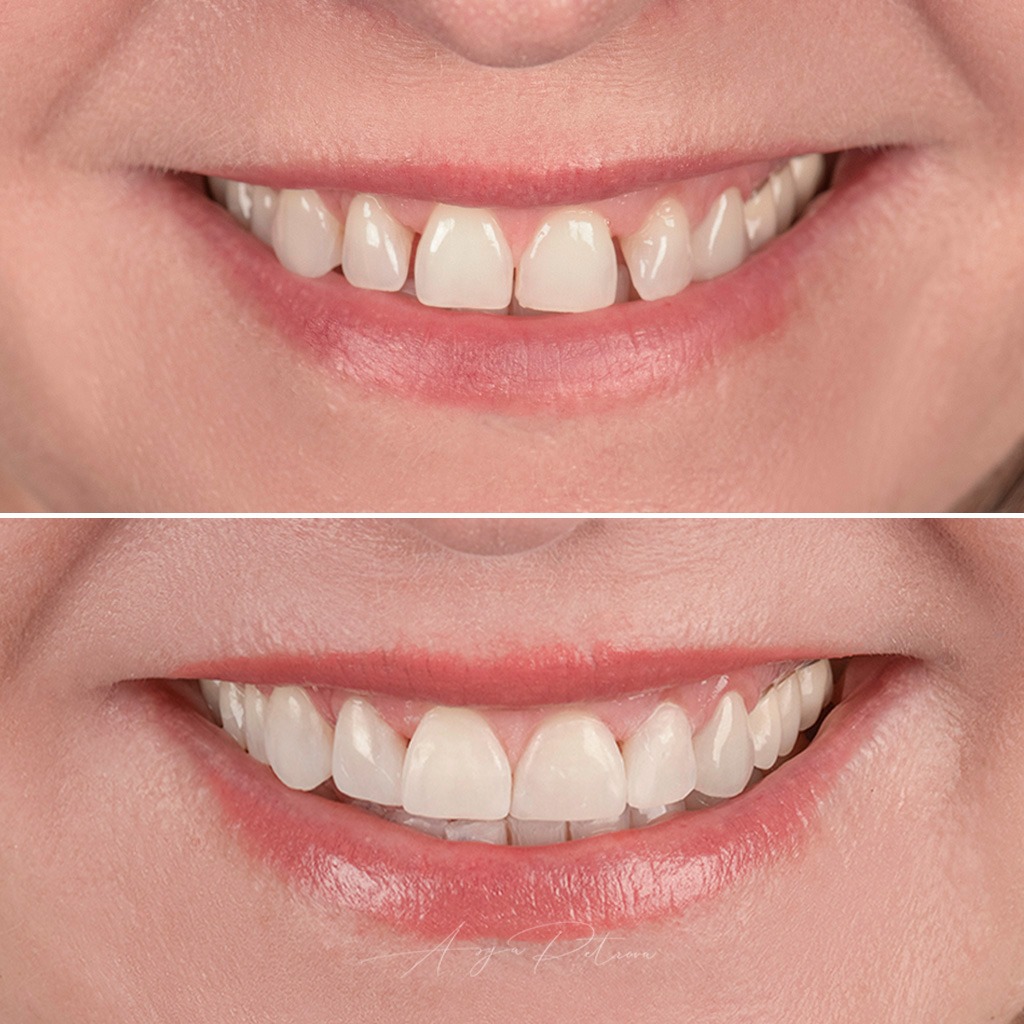
Composite Bonding – Smile 4
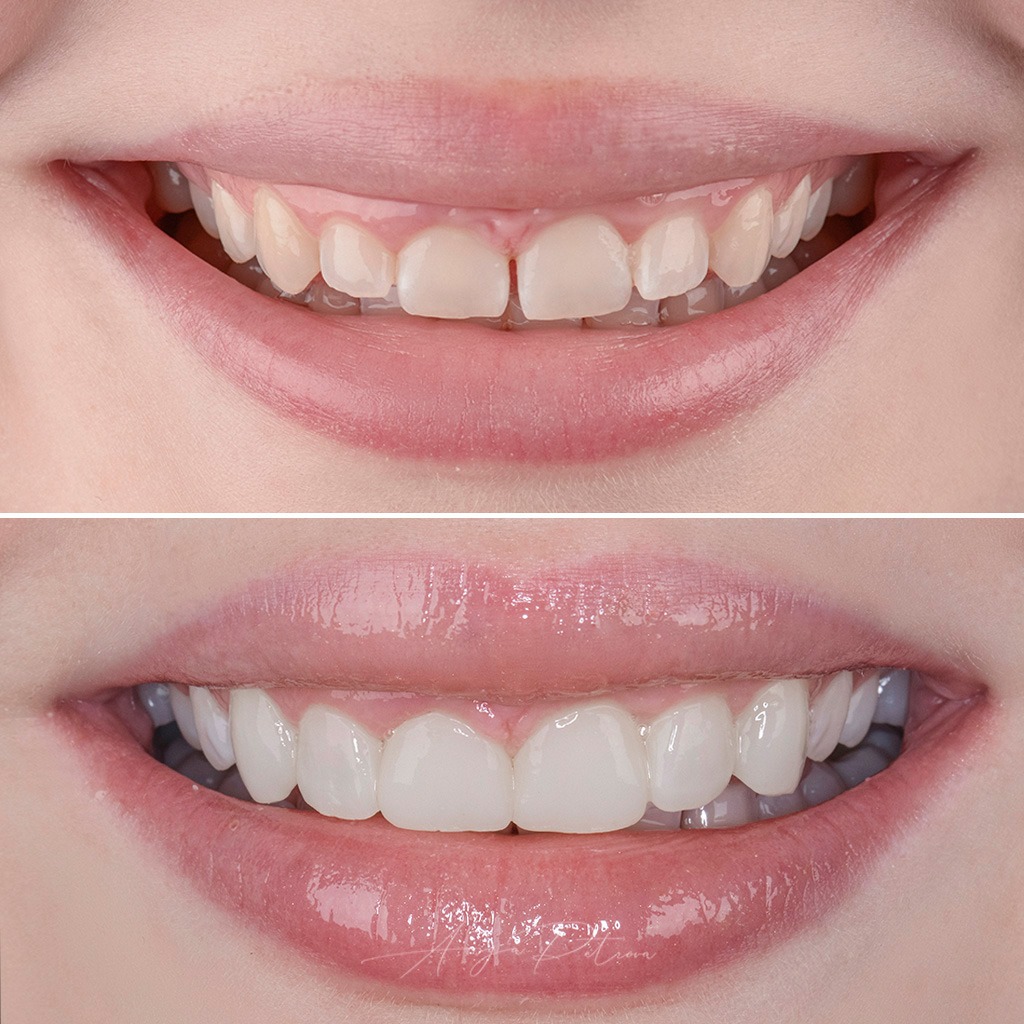
Composite Bonding – Smile 3
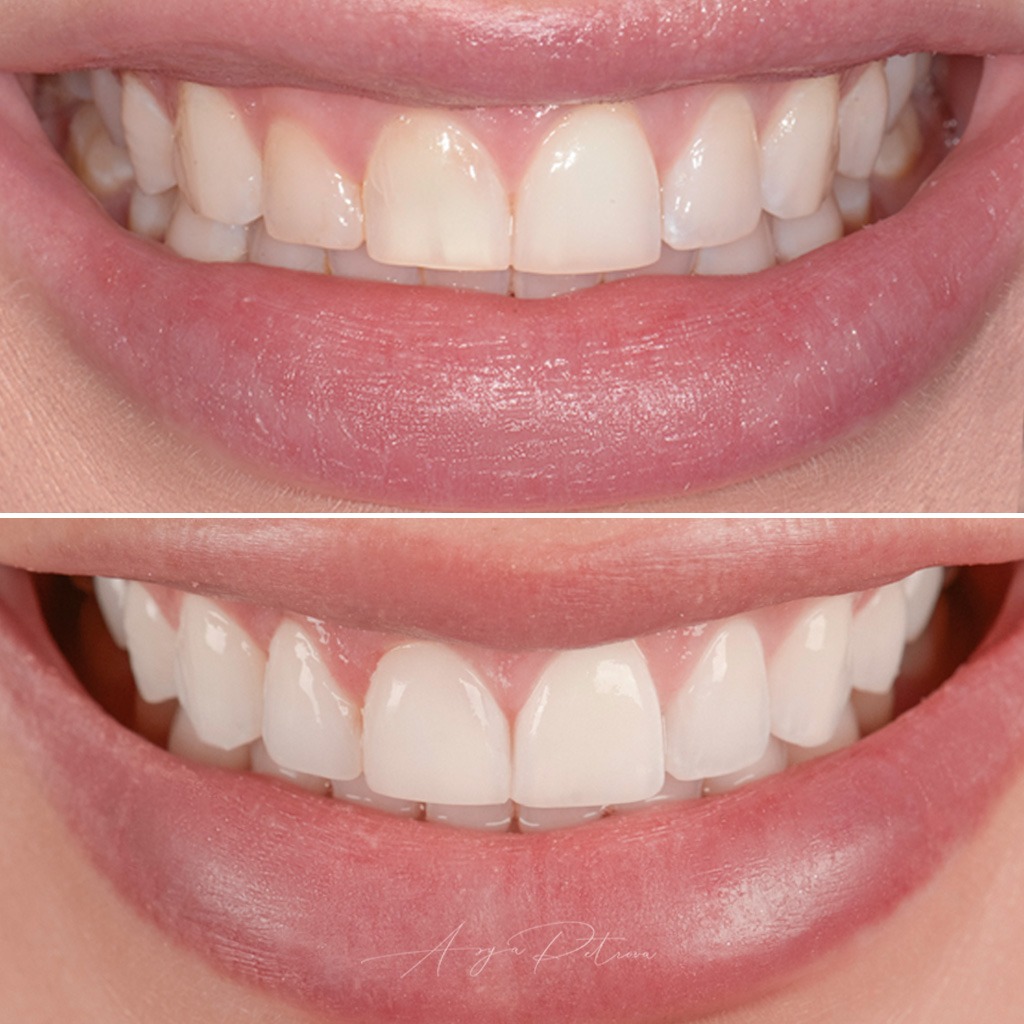
Composite Bonding – Smile 2
